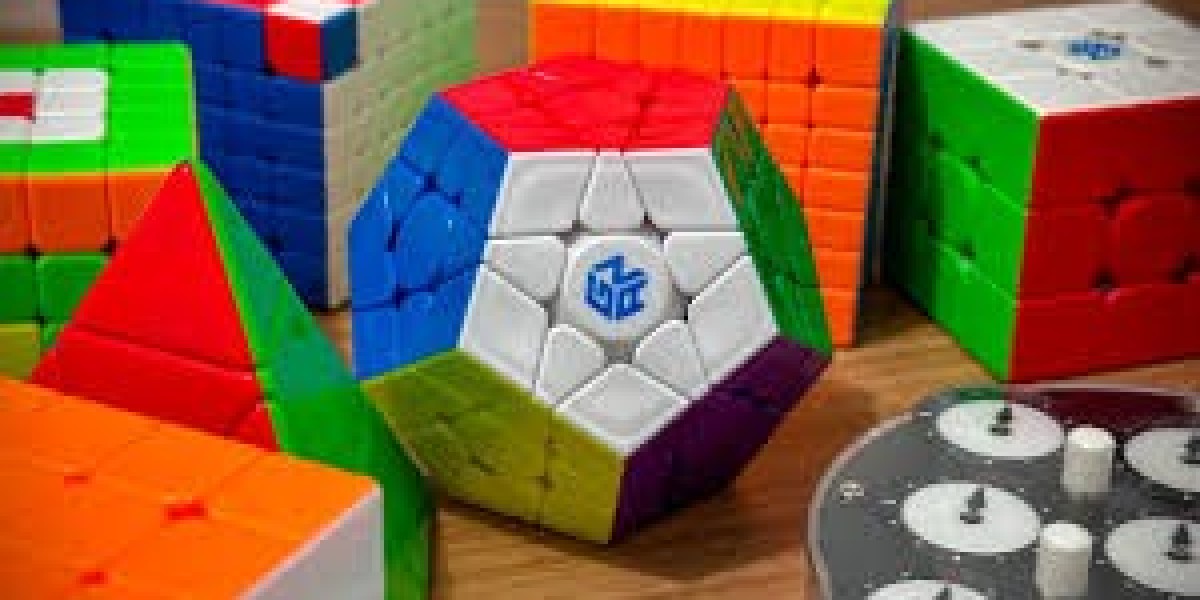Speedcubing, the art of solving a Rubik's Cube as quickly as possible, has gained a significant following since its inception in the 1980s. Enthusiasts, known as speedcubers, speed cube employ a combination of techniques, algorithms, and practice to achieve impressive solve times. This article explores some of the popular methods and algorithms used by speedcubers to tackle the Rubik's Cube with speed and efficiency.
Cross and F2L: The Foundation of Speedcubing
The first step in solving a Rubik's Cube quickly is to build the cross on one face. This involves strategically placing edge and center pieces in a way that forms a "cross" pattern. Speedcubers rely on their spatial reasoning and intuition to efficiently complete this step.
Following the cross, speedcubers employ the First Two Layers (F2L) method. F2L involves pairing corner and edge pieces and inserting them into their correct positions simultaneously. This step requires understanding the relationship between these pieces and anticipating their movements to minimize the number of moves required.
CFOP (Fridrich Method): Advanced Speedcubing Technique
The CFOP method, also known as the Fridrich method, is one of the most popular techniques used by speedcubers. It stands for Cross, F2L, OLL (Orientation of the Last Layer), and PLL (Permutation of the Last Layer). CFOP enhances solving speed by focusing on solving the cube's first two layers efficiently and then transitioning to solving the last layer in two steps.
OLL (Orientation of the Last Layer): In this step, speedcubers manipulate the orientation of the last layer's corner and edge pieces to ensure that all the colors align properly.
PLL (Permutation of the Last Layer): In the final step of CFOP, speedcubers use specific algorithms to rearrange the last layer's pieces into their correct positions. This step completes the solve and brings the cube back to its solved state.
Roux Method: An Alternative Approach
The Roux method is another popular technique embraced by speedcubers. Unlike CFOP, which focuses on layer-by-layer solving, the Roux method takes a block-building approach. It involves forming two 1x2x3 blocks on opposite sides of the cube and then solving the remaining pieces in two steps. The Roux method emphasizes fewer moves and efficient block construction.
ZZ Method: An Efficient Hybrid
The ZZ method is a hybrid approach that combines elements from both CFOP and the Roux method. It starts with building the F2L pairs in a way similar to CFOP, but then diverges by focusing on creating a 1x2x3 block and finishing the first two layers. The final steps involve orienting and permuting the last layer using specialized algorithms.
Practice and Finger Techniques
While algorithms and methods provide the foundation for speedcubing, practice and finger techniques are equally vital. Speedcubers develop fluid and efficient hand movements to execute algorithms rapidly. Techniques like finger tricks and lookahead help speedcubers anticipate the next moves and plan their sequences in advance, reducing pauses between steps.
Competition and World Records
The speedcubing community is vibrant and competitive, with numerous official competitions held worldwide. Competitors showcase their skills in solving the Rubik's Cube under various categories, such as single solves and average solves. The World Cube Association (WCA) sanctions these competitions and maintains official records for various cube sizes and solving methods.
Conclusion
Speedcubing is a captivating blend of strategy, algorithm memorization, finger dexterity, and practice. Enthusiasts employ methods like CFOP, Roux, and ZZ to solve the Rubik's Cube swiftly and impressively. These methods involve intricate algorithms that speedcubers learn and refine over time. As the community continues to grow and evolve, new techniques and variations emerge, pushing the boundaries of what's possible in the world of speedcubing. Whether you're a casual solver or an aspiring speedcuber, the journey to mastering the Rubik's Cube offers an exciting and rewarding challenge.



